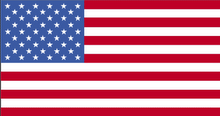Read original... Harpreet Toor, left, and Ravisharon Kaur talked with members of the South Asian community in Queens about the census. Eirini Vourloumis for The New York Times
Harpreet Toor, left, and Ravisharon Kaur talked with members of the South Asian community in Queens about the census. Eirini Vourloumis for The New York Times Kulwinder Singh, a 52-year-old Punjabi Sikh who works as a tow-truck operator, approached a young community organizer who was taping a promotional poster for the 2010 census to a wall inside his temple in Richmond Hill, Queens. Mr. Singh looked perplexed.
The New York Times
Percentage of 2000 Census questionnaires returned by mail, in selected tracts
“Population count,” the organizer, Herminder Singh, 19, explained in Punjabi, before launching into a detailed explanation of the survey.
The older man listened intently, finally declaring, with a resolve that would warm the heart of any census official: “My family has 10 to 15 members. When the form comes, I’ll fill it out.”
Those forms will start arriving in the mail next week, and government officials say the success of this year’s census will depend heavily on the grassroots efforts of thousands of nonprofit, corporate and community organizations that have volunteered to mobilize their constituents to complete the forms and mail them in.
They have their work cut out for them in Richmond Hill, a middle-class neighborhood with a large South Asian and Indo-Caribbean population. In the 2000 census, swaths of the area had some of the most dismal response rates in the city, with only about 4 in 10 households mailing back the forms.
This time around, members of Seva, a community-based organization that works with Richmond Hill’s immigrants, have vowed to raise those numbers by acting as advance troops for the Census Bureau.
“We understood how there was a vacuum in the community,” said Gurpal Singh, 34, the group’s executive director, who was born in the Punjab region of India and has lived in Richmond Hill since 1985. “We looked at what happened in 2000, which was nothing.”
Census officials say these advocates will be crucial in helping to dispel fears that the information they provide on the form will be used against them. Though the law protects the confidentiality of the information, many illegal immigrants fear that providing their personal information could lead to deportation. The group members can also help overcome language obstacles — a particular concern in Queens, where nearly half the residents were born overseas.
“The challenge is the thing that we’re also very proud of, and it’s our diversity,” said Susie Tannenbaum, the community and cultural coordinator for the borough president’s office. “So many language groups, so many immigrant populations.”
Richmond Hill, once heavily Italian and Irish, has changed drastically in recent decades. South Asians, particularly Indians, began settling there in large numbers during the mid-20th century. They were followed, beginning in the 1970s, by Guyanese and Trinidadians — descendants of Indians taken to the Caribbean in the 19th century to work as contract laborers on sugar plantations. The neighborhood is also home to one of the world’s largest Punjabi Sikh populations outside India.
Gurpal Singh and his partners at Seva decided to get involved in the census outreach more than a year ago because it dovetailed with their work as organizers. They saw it as a way “to get people into the room, to get them talking and to then discuss other things,” Mr. Singh said.
They have conducted scores of seminars for Richmond Hill businesses, community groups and its plethora of mosques, Sikh and Hindu temples and Christian churches. They have sent out e-mail blasts and used Facebook.
“We’ve been taking the grassroots approach, just making sure the local real estate guy understands what the census is about and the message he should send out to his clients,” Mr. Singh said.
The group’s attention to the neighborhood’s cultural subtleties is reflected in the thousands of posters and leaflets it has printed. Leaflets for the Punjabi population, for instance, are in Punjabi, illustrated with photos of Sikhs in turbans. But those for the Guyanese population are in English, with images of West Indian people.
“Because we live in the neighborhood, we have to use our instincts to know whether someone is going to walk by a poster and think it’s sexy,” said Ravisharon Kaur, 35, director of programs and development for Seva.
But some of the most critical work has begun only in the past few weeks, as organizers and their workers — many of them high school and college students, like Herminder Singh — blanket the neighborhood with literature and address constituents’ concerns one-on-one.
On a recent Sunday, Nadia Kahnauth, a Guyanese-American lawyer and Seva representative, stood in front of her congregation at the Bhuvaneshwar Mandir temple and gave a short speech about the census. (The temple is in Ozone Park, but draws some of its mainly Guyanese congregation from neighboring Richmond Hill.)
After the service, Ms. Kahnauth, clutching a stack of Census literature and flanked by her husband and three school-age volunteers, stood next to a statue of the Hindu deity Ganesha and buttonholed congregants as they filed by in stockinged feet.
“Do you have any questions about the census?” Ms. Kahnauth cheerily asked a Guyanese man. He stopped, a confused look on his face.
“It’s very simple,” she said, explaining the process.
“O.K.,” the man said, nodding, though his apprehensive smile and wary glances suggested otherwise. As he headed toward the door, Ms. Kahnauth smiled and shrugged, as if to say she had done the best she could.
The Seva activists acknowledge that they have not done enough to take aim at the neighborhood’s growing yet atomized Latino population, which accounts for about 28 percent of the total. In coming days, the group plans to dispatch a team of interns to canvass Latino businesses and storefront evangelical churches.
And once the census campaign is over, organizers will turn to a cause that hangs on the results of the count: the redrawing of state and federal legislative districts. They intend to leave the neighborhood census committees in place.
With a slight tweak to the committee names and a major shift in focus, they will be ready for their next battle.
 The former President of GuyAmerican Funding Corp., a mortgage brokerage firm in Queens, New York, pleaded guilty on Friday to participating in a $23 million fraud scheme, prosecutors said.
The former President of GuyAmerican Funding Corp., a mortgage brokerage firm in Queens, New York, pleaded guilty on Friday to participating in a $23 million fraud scheme, prosecutors said. 




























